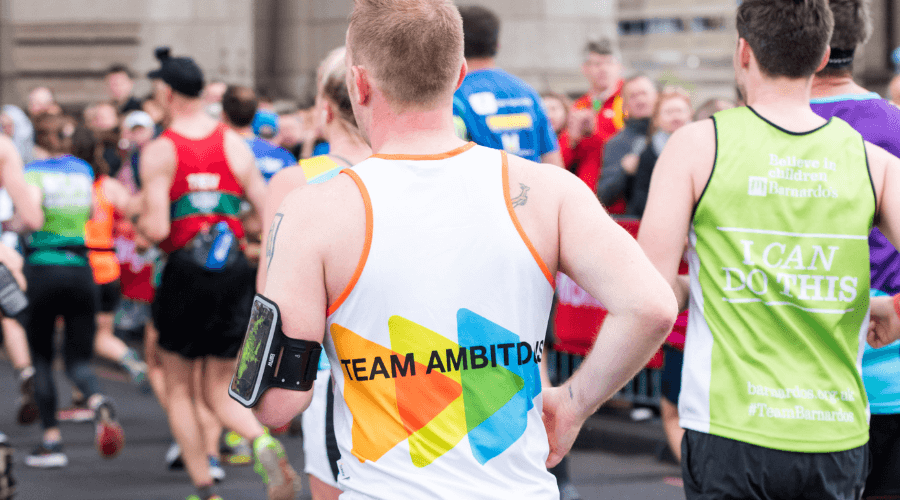Five ways to injury proof your body

Team Ambitious, time to create a bulletproof body.
Getting injured is extremely frustrating. It can affect you not only physically but also mentally. Not only that, but it can also be extremely costly if treatment is needed. Here are our top five tips to injury proof your body – “Prevention is 9/10th of the cure.”
Look after your feet
First things first, let’s look at your footwear. Running is a relatively cheap pastime compared to other sports, so it is worth investing where you can. Instead of picking the cheapest of trainers, or the prettiest, or ones that your friend recommends, go and seek professional advice on the correct footwear.
There are number of specialist running shops that will put you through various screens to ensure you have the most suitable for your running style. These screens can include gait analysis, pressure pad, and manual biomechanical assessments.
There is also the debate regarding regular heel strike running and barefoot/minimalist running. The impact forces, and biomechanics, vary greatly. Without going into too much detail, if you are interested in differing your technique then do your research and I would recommend working with a coach. Any change to your technique will affect your body in a different way, so start off slow and build up gradually.
Regular massage and foam rolling
Running puts significant forces and loads through our body. Our nervous, skeletal, and fascial systems all have to work efficiently. The repetitive nature of running, alongside how generally poor the majority of us are at stretching, means we get areas of tightness and built-up adhesions which can lead to dysfunction, inefficient running, and potential injury.
If money was no object then, most athletes would agree, a massage every day would be at the top of most people's desirable lists. There are so many benefits in getting a regular massage, so if you are training hard then you should reward your body with a regular MOT. If, like most, this isn’t possible then as often as you can afford. A professional will be able to identify any potential problem areas, as well as help with lengthening muscles and improving blood supply.
On top of this, it is highly recommended that you invest in a foam roller, as a maintenance tool, to keep your muscles healthy. This can also be used during your pre/post running protocol. Foam rolling should be part of your daily routine. On the days you are training I would use this for about 45-60 seconds on each area you are targeting. On the days you aren’t training, you can really spend a lot longer focusing on tighter areas and breaking up adhesions within your muscles and fascia.
Strength and conditioning
Runners love to run. Unfortunately, one area where runners fall short is getting enough, or any, strength and conditioning within their programming. There is a lot of divided opinion and poor education around strength training and runners, but it is essential.
Strength and conditioning work should be focused on helping you build strong foundations to allow your running efficiency to improve and will also significantly reduce your chances of getting injured.
If you are unsure about what you should be doing, then work with a personal trainer or ask a gym instructor to write you out a running-specific training programme. Regardless if you a veteran runner, or a first timer, make sure you start with mastering the very basics.
Focus on glute activation and core strengthening. Once you are able to engage these muscles, your pelvis will be a lot more stable and you will be able to build on these and progress into more running-specific strengthening. Squats, lunges, and other movements can wait until basic conditioning is achieved.
Linked to this is getting your nutrition sorted out. Our bodies are subjected to significant impact forces when running, and they increase dependant on the size of the person. With that being said, although a delicate subject, if you are carrying excess ‘timber’ then address your nutrition and cross-train to limit significant weight-bearing activity.
Pre/post running protocols
To stretch or not to stretch? The likelihood is that most of us don’t spend enough time preparing our bodies to run, nor correctly. Also, after a training session, we often swap a post-run stretch with a shower and the sofa.
As always, there is a divided opinion on how/when/why to stretch before and after you run. Again, this will vary from one runner to another. A popular pre-run protocol is to grab a foam roller and spend about ten minutes increasing blood flow and oxygen throughout the body, and to open up some neural pathways. This is then followed by some spinal mobilisation exercises to free up the spine. This is particularly important if you are in a seated position for long periods of your day in an office or a car.
This is the time to then add some dynamic stretches to your repertoire of preparations if you find it works for you. Two exercises that work well are walking lunges, and leg swings. When it’s time to run, start slowly and ease into it.
Once you finished your run, a cool down is essential. Grab your foam roller and massage your legs. This will help with blood flow and reduce your DOMS (Delayed Onset of Muscle Soreness). Following your rolling, static stretching is the final ingredient as your muscles are now pliable. Focus on all your major muscle groups, hold for a minimum of 30 seconds whilst breathing and relaxing into the stretch.
The quality of your session is more important than the quantity. So if you only have a spare 60 minutes in your day, you are better of spending ten minutes before and 15 minutes after looking after your body than by solely running for an hour.
Rest
This is one of the most overlooked aspects of runner’s training. Correct rest and recovery are as important as any aspect of someone’s training. Over training is one of the most common causes of injury. The best way of enforcing rest within your week is to get organised. In fact, you should map out your week ahead so you know when you are running, strength training, foam rolling, resting, etc.
If you are training for a specific event and increasing mileage weekly, then don’t forget to have a recovery week every 3-4 weeks. Allow your body to recover and repair. A recovery week consists of a reduction in the intensity and duration of your training. The amount reduced is dependant on the individual and what phase of training you are in.
Ensure you are getting at least eight hours of sleep per night. Avoid caffeine after 4pm in the afternoon as it can stay in your body for six hours, so will affect the quality of your sleep. Also, look at your night time routine - you shouldn’t be watching TV or be on your phone within 30 minutes of going to sleep. The electrical stimuli will also significantly affect the quality of your sleep.



